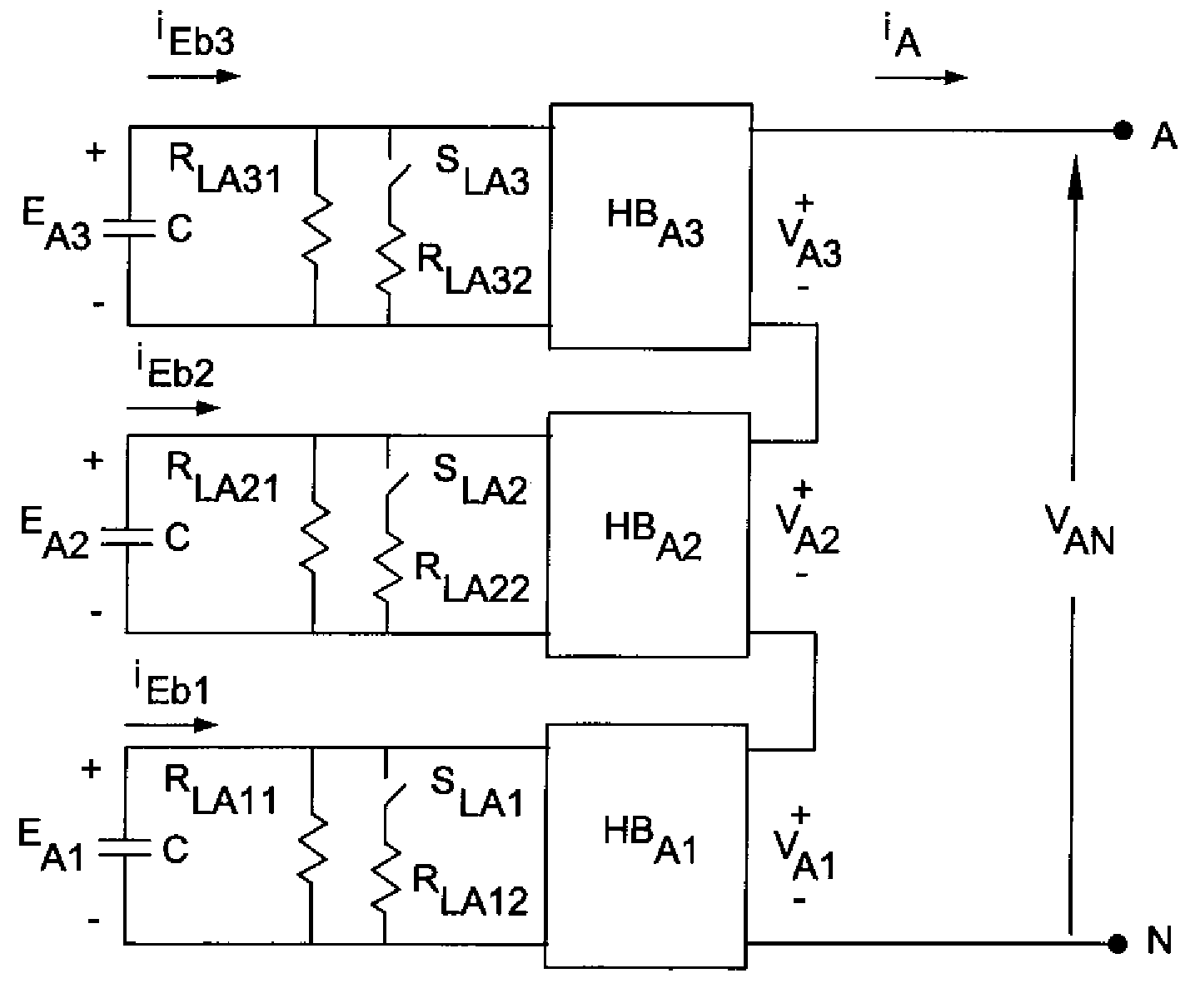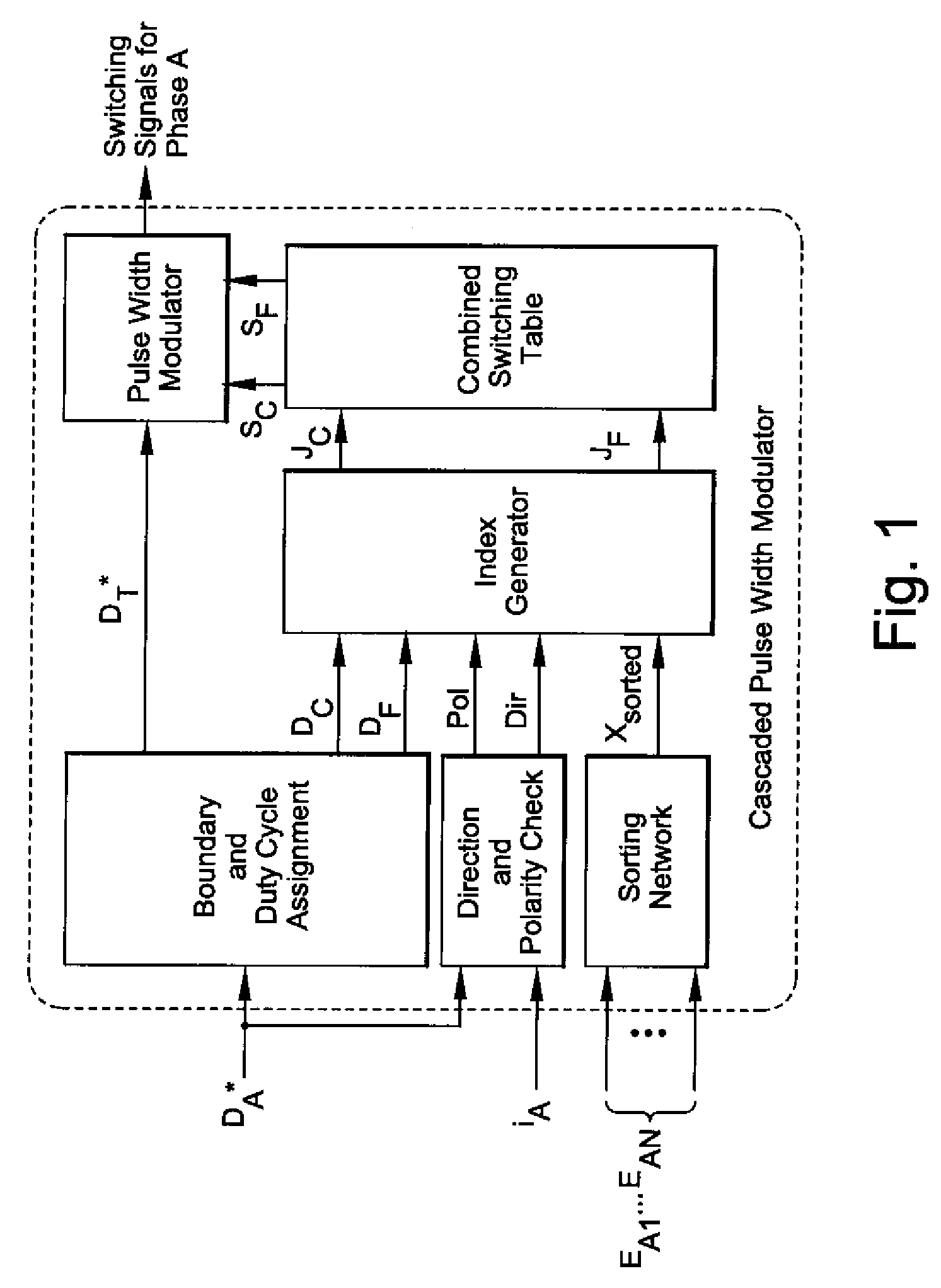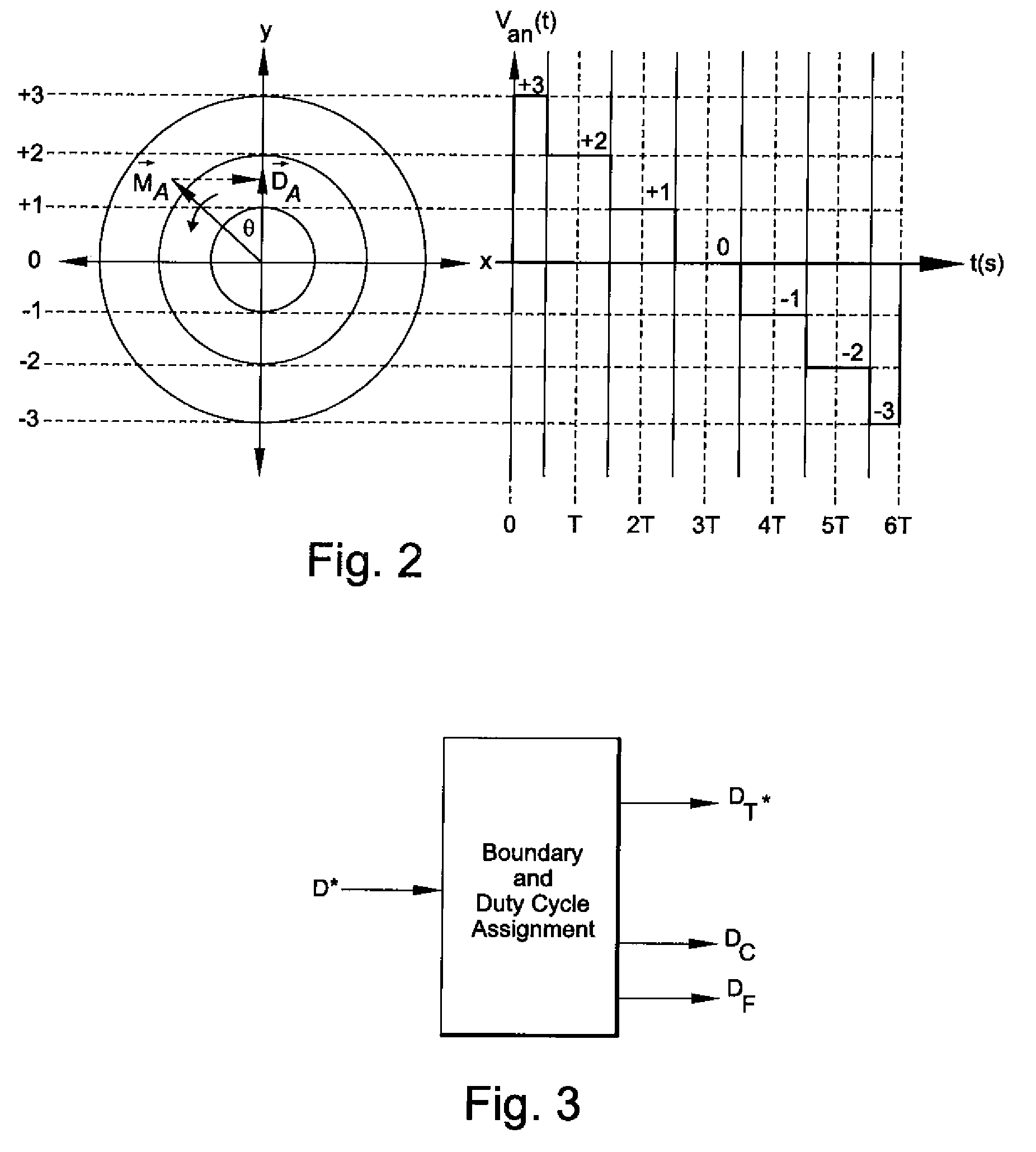Method and circuit for cascaded pulse width modulation
a cascaded pulse width and modulation technology, applied in pulse manipulation, pulse technique, instruments, etc., can solve the problems of complex control design, difficult design of compensators for each individual loop, and high cost, so as to eliminate dc-capacitor voltage imbalan
- Summary
- Abstract
- Description
- Claims
- Application Information
AI Technical Summary
Benefits of technology
Problems solved by technology
Method used
Image
Examples
example 1
[0068]A general PWM waveform synthesized by the proposed PWM, as shown in FIG. 14, is described and explained by way of example. In the period between T and 1.5T s, the duty cycle {right arrow over (D)}A—T is read. The switching signals corresponding to the index JF are sent to the main switches. At the moment that the negative slope slp1 intersects {right arrow over (D)}A—T, the main switches are switched to the switching signals corresponding to the index Jc. In the second half-cycle, the duty cycle is updated to {right arrow over (D)}A—0.5T. The status of the main switches is, however, still unchanged. Until the moment at which the positive slope slp2 intersects {right arrow over (D)}A—0.5T, the main switches are switched back to the switching signals corresponding to the index JF. This completes a switching cycle.
[0069]To illustrate the performance of the cascaded PWM technique, a single-phase, seven-level cascaded-based STATCOM with the DSP-based controller is set up and tested...
example 2
DC Voltage-Balancing During Transient
[0070]In this experiment, the STATCOM operates in the worst-case transient, which is either from the full capacitive to full inductive mode or vice versa. From the experimental results as shown in FIG. 15. At time t1 the STATCOM is commanded to abruptly transfer from the full inductive to the full capacitive mode. Before time t1, the output current iA, which is leading the voltage at the PCC, VpccA, by 90°, indicates that the STATCOM operates in the inductive mode, while the output current iA lagging VpccA by 90° after time t1 indicates that the STATCOM operates in the capacitive mode. The result shows the fast response of iA to the step command. During the full capacitive mode, the 120 Hz voltage ripple across the DC capacitor is at its maximum, which is approximately 7 Vpeak-to-peak or 10% of the DC voltage setting of 70 V, and which is consistent with the EA1 waveform, as shown in FIG. 15. Since three H-bridge converters are used in one phase ...
example 3
DC Voltage-Balancing During Capacitor Disturbation
[0072]To further verify the performance of the proposed cascaded PWM technique, phase A of the seven-level cascaded converter is set up as shown in FIG. 17. A set of resistors is paralleled with the DC capacitors and represent the additional losses of the H-bridge converters. The semiconductor switches SLA1 through SLA3 are used to control the resistance across the DC capacitors. With the combination of these three switches, several different resistances across the DC capacitors can be effected during different STATCOM operation modes.
[0073]In the first case, the full-capacitive mode, the losses of all three H-bridge converters are increased by connecting three different resistors in parallel with Hie DC-bus capacitors. The response of the three DC capacitors voltages, EA1 through EA3, to the disturbance at the DC links is shown in FIG. 18. The rising edge of the SLA1 gate signal indicates the beginning of the DC-capacitor voltage di...
PUM
 Login to View More
Login to View More Abstract
Description
Claims
Application Information
 Login to View More
Login to View More - R&D
- Intellectual Property
- Life Sciences
- Materials
- Tech Scout
- Unparalleled Data Quality
- Higher Quality Content
- 60% Fewer Hallucinations
Browse by: Latest US Patents, China's latest patents, Technical Efficacy Thesaurus, Application Domain, Technology Topic, Popular Technical Reports.
© 2025 PatSnap. All rights reserved.Legal|Privacy policy|Modern Slavery Act Transparency Statement|Sitemap|About US| Contact US: help@patsnap.com



